Day 4: Why We Picked Shopify over BigCommerce for our Store
Sales to Date: $155.56
Just last year, Mike and I built a million dollar business with Treadmill.com using BigCommerce, of the most popular shopping cart platforms. I was the developer, wireframer, UX designer and architect for many of our custom built tools. In a word, we pushed BigCommerce to the limits on what it was capable of doing – and then some. I would safely say that I know BigCommerce better than 99% of anyone out there – developers, designers or business operations folk. Mike currently runs IceWraps.com on BigCommerce and I run CuttingBoard.com on it as well, so we still have a vested interested in BC.
So, this may come as a surprise when I say that for ChoppingBlocks.com, I've decided to go with Shopify instead. Why would I do this when I am a BigCommerce expert? I'll tell you.
When we first decided to build Treadmill.com, we knew that it would need to grow into a mid-sized business in order to be successful. At that same time, it was actually our first foray into true ecommerce. While Mike and I had both built online businesses that catered to hundreds of thousands of customers, this would be a first at using an existing turn key platform. In that sense, I had enough background in project managing IT projects that the mere act of picking a shopping cart was relatively easy.
Within a few hours of search, poking around and doing research on Google trends, I came to the conclusion that there were really only a few players worth considering:
Magento was definitely the leader of the pack in popularity when it came to ecommerce platforms. That said, I did my research, talked to many developers and Googled around and realized that while Magento was quite powerful, it was also a very steep learning curve. The reason is that unlike many modern carts that don't let you open up the hood, Magento's code base was completely available for customization. This meant you could do anything you dreamed of… provided you had a developer (or team of developers) and the funds to pay said developers to stick around.
Unfortunately, this also meant that Magento was highly inaccessible for a start-up that wanted to keep costs low and boot strap their way into a business. The average cost of getting a bare bones Magento system up and running would be $5,000 to $10,000. For an custom website made in the US, we were looking at $40,000 to $60,000. For this reason, we decided against Magento.
Lesson 12: Websites are not cheap and neither are software developers. Unless you know how to manage coders and developers, be prepared to spend.
This really only left BigCommerce and Shopify as the next big players in the market. While there were a bunch of other carts, such as Prestashop, Volusion, 3d Cart, OpenCart, WooCommerce (and the list goes on..), it became quickly apparent that these other carts were lagging behind the technology curve. With both IceWraps.com and CuttingBoard.com, we do what we call a “SaaS stack“, which is a series of services that each compliment each other via integrated APIs. For example, we both use BigCommerce + Stitch Labs + Ship Station + Quick Books Online – all of which integrate with BigCommerce (and Shopify). There are many leading software services, but the common denominator that comes up time and again is that they almost always work with only Shopify, BigCommerce or both.
Why We Initially Chose BigCommerce over Shopify
It came down to one decisive factor: Shopify had transaction fees and BigCommerce didn't. Their fees ranged from 2% to 0.5%, but when you're a business nearing $1MM in sales, 0.5% is $5,000 in extra expenses! I miiiight be able to understand if we we had an AOV (average order value) of $5 and thus were pushing 200,000 transaction through the system. The reality is our AOV was closer to $1,000 so we're pushing a whole 1,000 transactions and there's no reason for this surcharge.
When you look at Shopify's current pricing, they actually say “No Transaction Fees” but the reality is that when you hover over the line, they still exist:
What Shopify is doing is forcing you to use their payment system, because only a fool would willingly pay 2.0% on top of their existing merchant rate. No matter how good of a negotiator you are, there is zero, absolutely zero chance that you can take a 2% hit and still beat their system rate of 2.9% + $0.30. When we first signed up for BigCommerce, Shopify didn't have their own merchant service and the transaction fees were locked, but with this new pricing model of 2.9%, it's competitive to what Stripe is offering (also 2.9% + $0.30).
In addition to entry level plan, Shopify is actually offering some other benefits with a 2.5% and 2.25% rate at the higher plans. With BigCommerce, we're using SecureNet which starts at 2.75% or 2.55% plus $0.20, so it's a decent saving over Stripe and Paypal.
Sidenote: To give you an idea of what is possible though, with Treadmill.com, we negotiated InterChange Plus +0.01%. What does that mean? That means we paid the actual credit card rate plus exactly 1 point on top. Our actual processing percent came out close to 2.3% at the end of the day. When you process offline, you can get under 2% pretty easily, but online orders always are run at a higher interchange rate unfortunately.
Lesson 13: A 2.9% transaction rate is the merchant rate for suckers. Do yourself a favor and get a better rate.
So, with the removal of Shopify's transaction fees, the platform as a whole seems much more appealing. But I'll talk about some technical reasons why I'm also leaning toward Shopify.
Mile High View: Shopify vs BigCommerce
Before I signed up with BigCommerce, I played with both systems to really try to gain an understanding of how each worked. The simplest explanation I can give is that Shopify is like a Mac and BigCommerce is like a PC. Shopify is initially aimed at non-tech savvy users and tries to minimize the amount of buttons, widgets and gadgets available. BigCommerce, on the other hand, has a plethora of tools, customization options, settings and out of the box functionality.
Here's a screengrab of Shopify's product screen and individual items:
It's pretty light, with a simple and intuitive interface that most people would be able to figure out.
Now let's look at BigCommerce instead:
From the get-go, BigCommerce is giving many more options, choices and this is just one tab of eight. Out of the box, BigCommerce is rocking a whole lot more features… at least on the surface. I could go on and on with examples of how categories work, product options, and such, but this same sentiment will repeat each time: Shopify is simple and streamlined, BigCommerce is multi-functional and feature-rich.
With Treadmill.com, BigCommerce worked well because there were a lot of crazy options and rules that we had to do in order to upsell various services like white glove delivery and assembly. We ended up doing a creative system of adding weights to each unit and using different ranges of weights to calculate how much to charge for extra services. While Shopify supports variants, it doesn't support complex rules out of the box such as BigCommerce.
Example of Shopify variants listing:
Example of BigCommerce variants ruleset:
Now how much do variants matter to you? For 90% of ecommerce stores, I don't think complex variants are much of an issue. So for most businesses other than us, Shopify is perfectly capable of dealing with the shop needs.
Here's my breakdown of who wins in each section:
- Products: BigCommerce enables more details and management
- Categories: Shopify for superior rules and automatic classification
- Blogging: Tie
- Order management: Tie
- Coupons: BigCommerce has coupons and promotional rules, making it the hands down winner
- Platform Pricing: Tie
- Site modification: Shopify by a landslide, as most of it's themes are customizable with an easy editor
So overall, toe for toe, from an operational standpoint, it's a fairly even match where the business needs end up being the overriding factor in which platform is better. For a simpler, easy to use platform that is geared toward someone that wants to build an ecommerce site without the assistance of developers, Shopify is bar none, the better choice. For a mid-level ecommerce store or a shop keeper not afraid of technology that has more complex needs, BigCommerce is the better answer.
I believe that Shopify's focus on a better usability experience has been it's secret to success and surge in popularity. The simple interface caters to the vast majority of ecommerce stores, which are mom and pop shops that don't have a dedicated IT person or developer on hand to support the operation.
The Developer View Under the Hood
Now where things really change is when you start poking around into the nuts and bolts of each platform. While I mentioned before that BigCommerce had more features out of the box, the truth of the matter is that Shopify is a sleeping giant when it comes to tucked away functionality. Here is what Shopify is able to offer that BigCommerce can't:
- Ability to add logic into templates
- Broader and more extensible API
- Mobile-first mentality
- SEO Best Practices (minimizing assets like CSS and Javascript)
- Huge library of third-party plug-ins (BC has a broad plugin library, but Shopify is much larger)
So, while Shopify might be the Mac-inspired UX on the surface that is easy to work with, it ends up being a much deeper platform than BigCommerce. The problem remains, however, that in order to tap into many of these features, you'll still need to enlist a developer to assist you.
Lesson 14: When choosing a shopping cart, you should always factor in ongoing developer and designer costs.
For ChoppingBlocks.com, I've already researched which plug-ins I'll need and all of them can be taken care of through Shopify. On BigCommerce, it will require a lot of jQuery hacking (of which I have tons of experience with) and I know that it's not the optimal solution.
Summary: Top Reasons Why I'm Going with Shopify
- Shopify no longer charging ridiculous transaction fees
- Mobile focused templates and designs out of the box
- Extensible API to achieve custom features that I'll need without crazy hacking of code
- Larger install base and thus, longer technology life-cycle
- Curiosity! I always like to try new systems so I have a legitimate opinion of what is truly better
Does this mean we will migrate our existing BigCommerce sites to Shopify? Not at all! Our BC sites work just fine and I'm happy with how they are operating for now. There are no major boundaries to push. And like I said, you should never blindly trust what myself or anyone else says out there about which site to use. I always recommend you create a trial account at each store and play around for a day and get a feel for how they work. Yes, it will take two days of work, but you know what – you could be saving tens of thousands of dollars on unneeded development costs or hundreds of hours fighting your platform just because you picked the wrong one.
So do me the favor and just create a trial one to test each out if you're thinking of it. Here's links to each once more: Shopify and BigCommerce.
Which platform is better, Shopify or BigCommerce? Let us know your opinion!
This post is part of How to Run a Chop Shop, a real life blog series on attempting to transform a small ecommerce store into a profitable online business in 365 days.
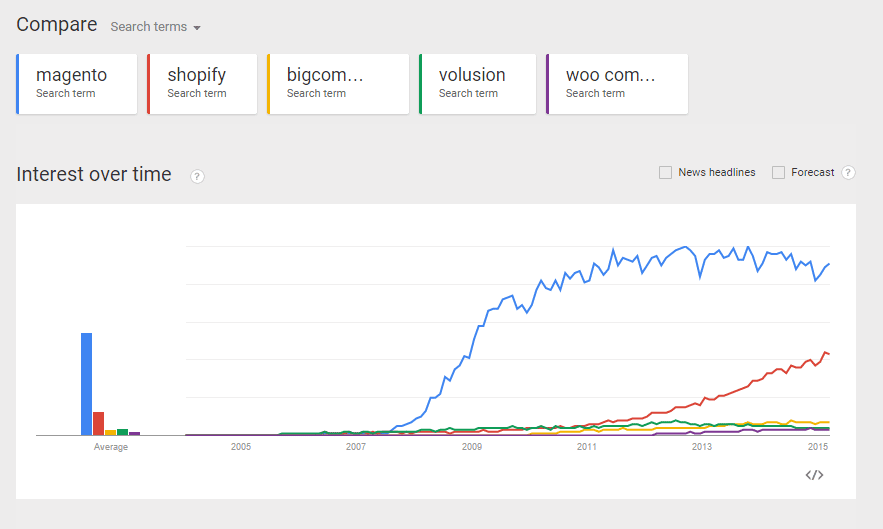
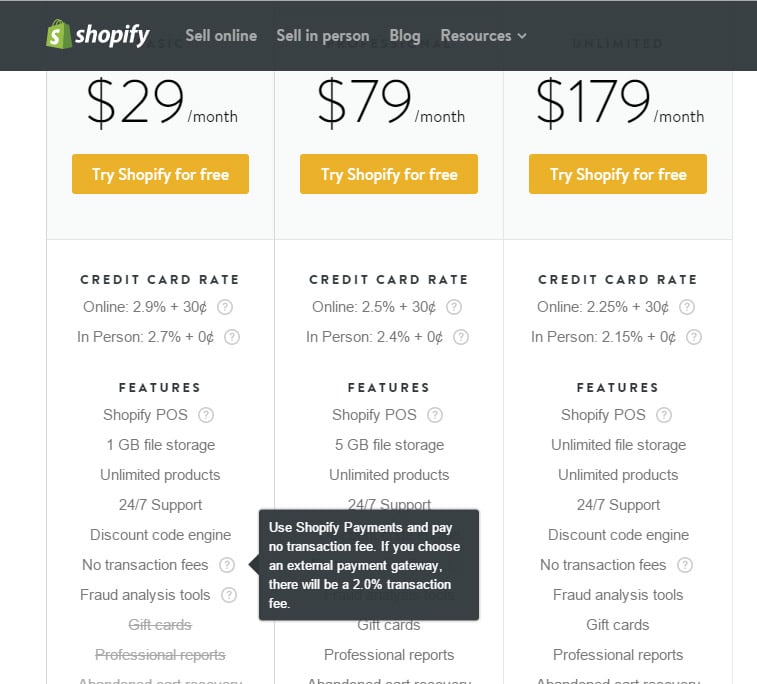
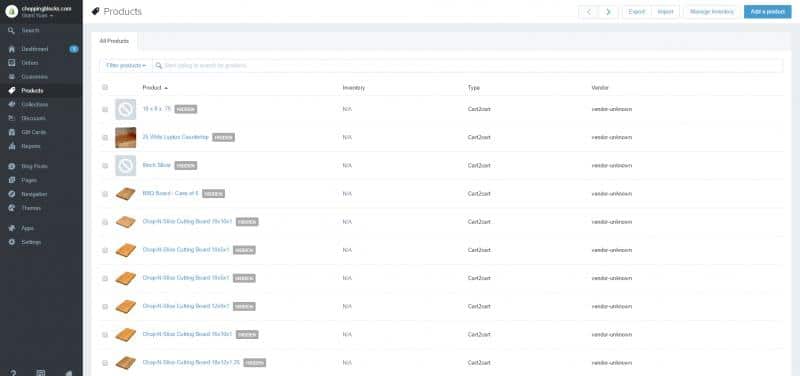
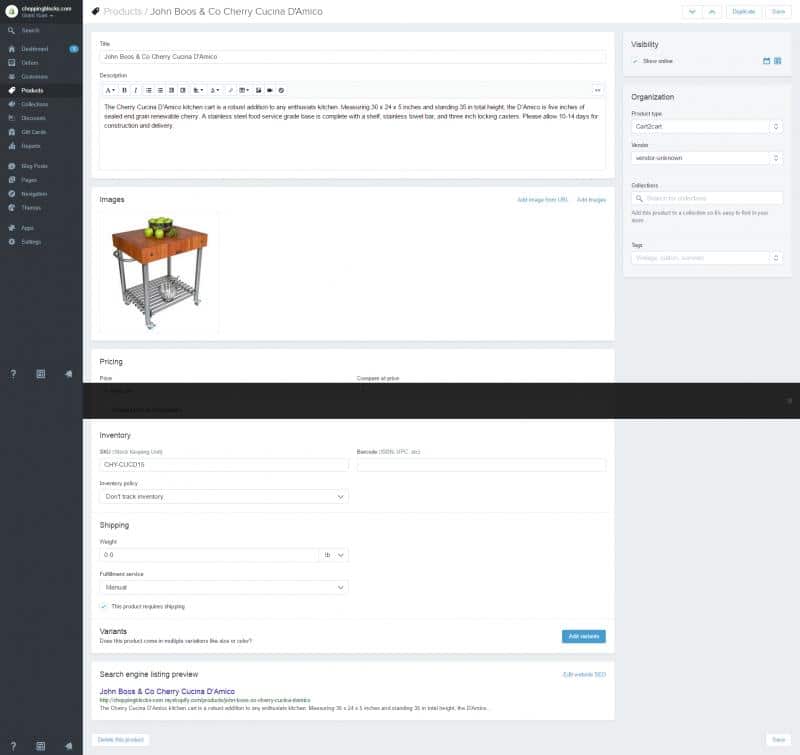
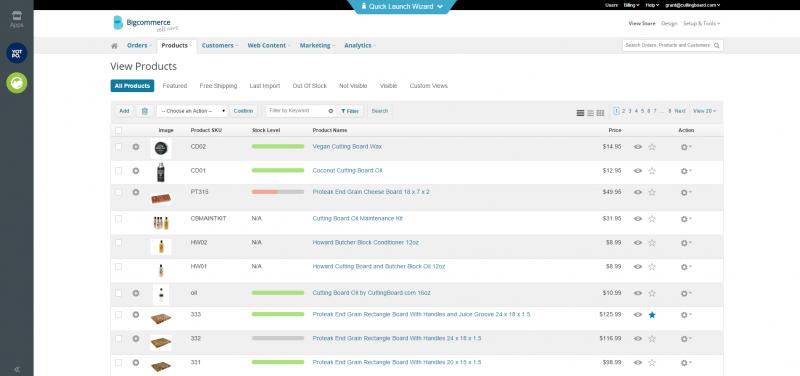
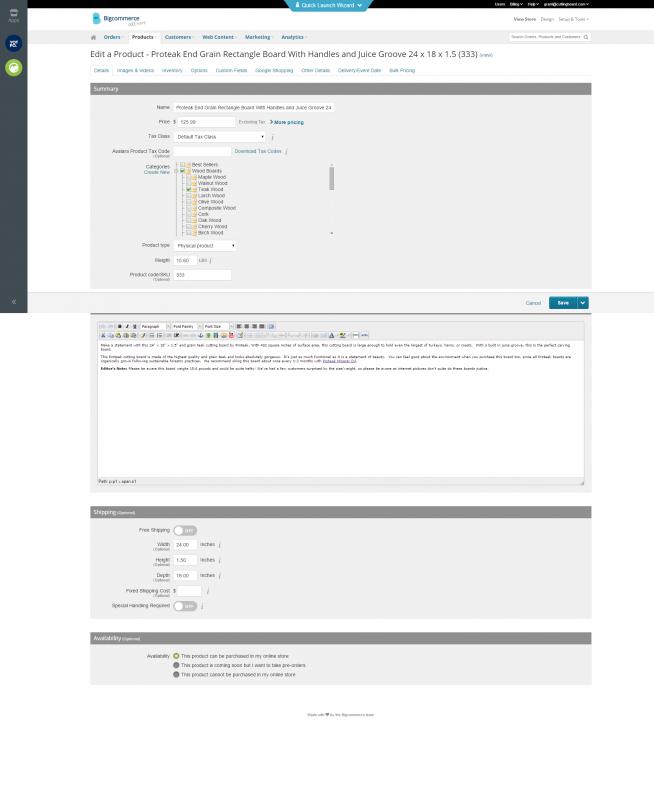
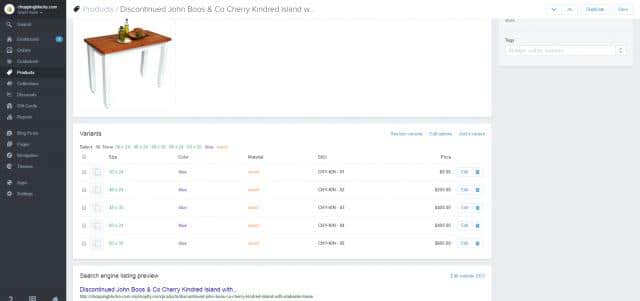
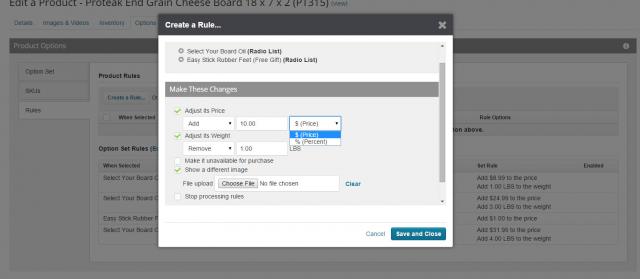




Hi Grant, just came across your article, albeit 5 years since it was written. Interested to know whether, in hindsight, now that ChoppingBlocks.com has been built, Shopify over Bigcommerce was still the right decision, in particular when considering its API
Shopify is still the best :)
Amazingly enough, I had some similar experience with BigCommerce as my shopping cart at one point. What seemed to be a great option at first turned out to be not so good later on. Even though I got used to a complexity of their internal interface (which is not so bizarre as it seems at the first sight), their dramatic rise in monthly fees took me by surprise. Additionally to that, I noticed that, on average, my colleagues on Shopify performed much better than I did in terms of SEO. We unitized the same practices basically, but I still would always be few positions behind.
Eventually, this urged me to move to Shopify (btw super easy with this thing https://www.shopping-cart-migration.com/shopping-cart-migration-options/2765-bigcommerce-to-shopify-migration) and I’ve never happened to regret my choice since.
Very nice article.
Just curious, what’s your opinion on the new BigCommerce pricing model and how is it going to change your relationship with BC? Are you going to migrate your stores over to Shopify?
On April 1st, our pricing increases from $79 to over $350 per month on BigCommerce. And we are looking to migrate to Shopify.
Thanks again.
Wow! I have read the entire site and am now questioning the direction I was taking. I am currently on Network Solutions and it is a stagnant platform. It was really good a few years ago until web.com took over. I recently chose 3dcart over bc and shopify due to features, pricing, and certain options. I now am not sure. Bc may work for my needs, but shopify definitely will not due to limitations on payment because of a certain product line not being supported by stripe payments. It would force me to pay the extra .5% over my merchant fees. Or pay an enormous amount monthly for an enterprise account. With BC, the issue arises with having to be on a tier 1 enterprise account in order to get dedicated ssl sitewide. They no longer allow it on the other plans. Should I be running from 3dcart? It seems like there are some unhappy customers, but that may be due to very specific issues they are having and not necessarily reflect what is happening to most. Have you had a chance to look at their upcoming v7 release? It seems to be very competitive with both bc and shopify. What am I missing.
Hey Premal, great being able to chat with you on a consulting basis and understanding your needs a bit better. You’ve got a great business model that I can see and the tech is a very doable part of your operations that shouldn’t give you too much trouble. I’ll be rooting for you and hopefully we can do an post on your growing business on EcomCrew in the future!